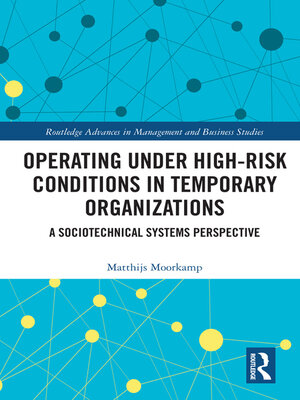Operating Under High-Risk Conditions in Temporary Organizations
ebook ∣ A Sociotechnical Systems Perspective · Routledge Advances in Management and Business Studies
By Matthijs Moorkamp

Sign up to save your library
With an OverDrive account, you can save your favorite libraries for at-a-glance information about availability. Find out more about OverDrive accounts.
Find this title in Libby, the library reading app by OverDrive.



Search for a digital library with this title
Title found at these libraries:
| Library Name | Distance |
|---|---|
| Loading... |
Organizations increasingly use temporary designs. Many temporary organizations are assembled by "mixing and matching" building blocks from static, bureaucratic, parent organizations into a temporary configuration. At the same time, such "mixed and matched" temporary organizations often operate under difficult and dangerous circumstances. During operations, these temporary organizations can experience numerous internal problems: ranging from friendly fire in a military context to budget and time issues in construction projects and problematic coordination in a crisis management context.
This book develops insight into the relationship between a "mixing and matching" temporary design strategy and operational problems. To so do, military and crisis management contexts are systematically studied from a sociotechnical design perspective that emphasizes self-organization to develop organizational controllability.
Operating Under High-Risk Conditions in Temporary Organizations demonstrates that a "mixing and matching" design strategy can be related to system failure. Furthermore, it is shown that a process of self-design emerged in which operators attempted to create ad-hoc networks for meaningful, safe and controllable operations. The analyses result in a model that shows mechanisms between characteristics of organizational design and controllability of operations. Not only does this model have relevance to the military and crisis management contexts, relevance is also demonstrated for a broader family of temporary organizations and application of sociotechnical network design theory.







